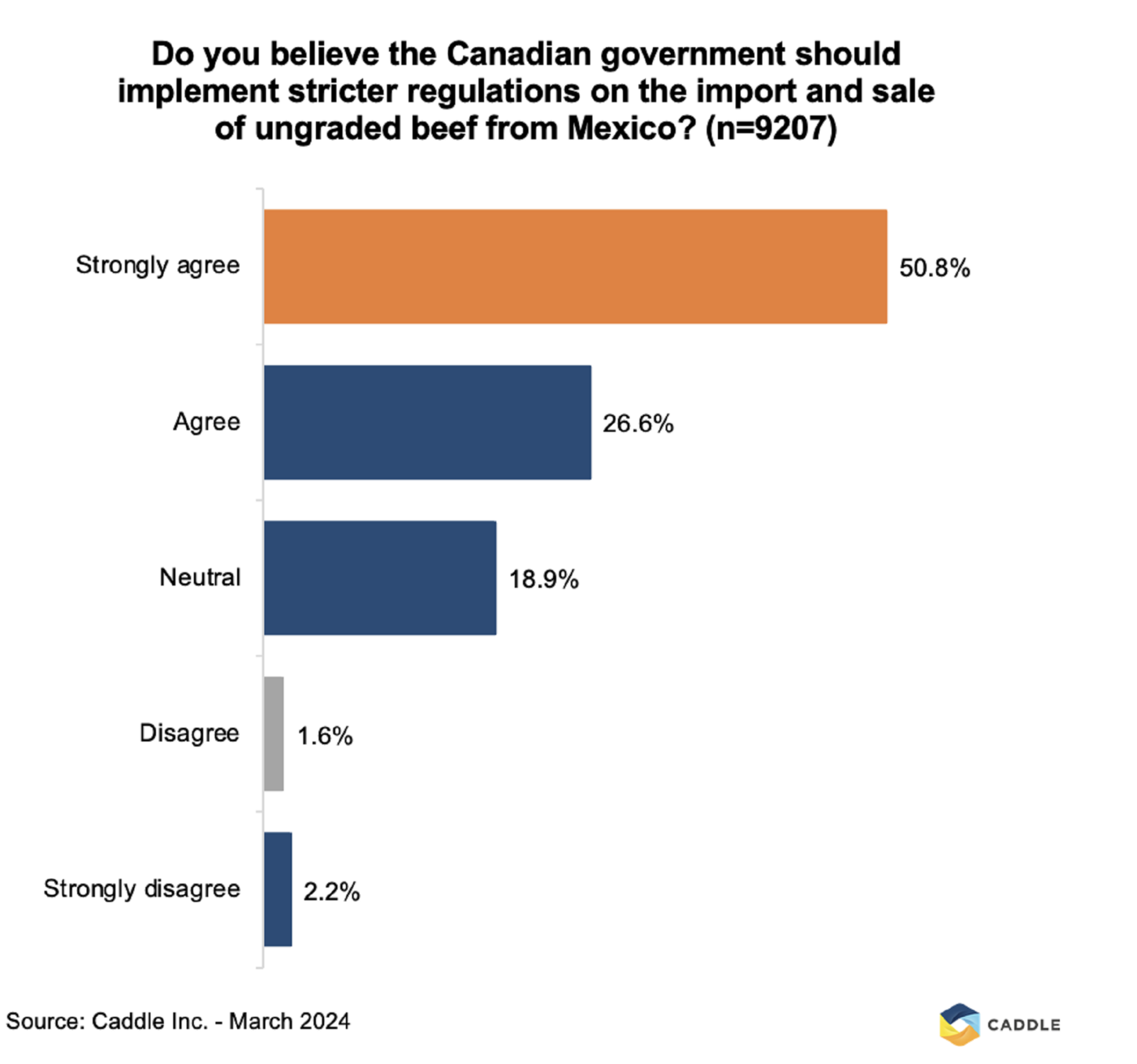
Nearly 40 per cent of Canadians think ungraded beef is safe to eat
While ungraded Mexican beef may sound like a mystery meat, it turns out that over one-third of Canadians feel it's safe to eat.
A survey of 9,207 Canadians was recently conducted by Caddle — an Ontario internet marketing service — on behalf of the agri-food analytics lab at Dalhousie University.
The survey was composed of five questions, asking Canadians their overall thoughts on ungraded beef products.
The results found that a combined 39.5 per cent of Canadians thought Mexican ungraded beef was "very safe" or "somewhat safe" to eat.
Nearly one-third (28.4 per cent) of respondents said they were "neutral" about the meat, while 32.1 per cent said they thought the product was "somewhat unsafe, or "very unsafe."

Caddle/ Supplied
The meat made headlines in February after Canadians started to post on social media about noticing it in grocery stores around the country.
Although ungraded beef may appear questionable, experts have assured it is safe and edible, but its quality may vary.
Canadian Beef provides a helpful breakdown of how Canada's meat inspection works and how beef is "graded."
According to the organization, beef grading indicates the "amount of marbling in the meat."
"Grading is a voluntary process for Canadian beef, but inspection for safety is mandatory," Canadian Beef stated on its website.
Ungraded beef influencing shopping habits
Nearly two-thirds of respondents (57 per cent) said that the knowledge that beef was ungraded from Mexico would either "definitely" or "probably" influence their decision to purchase it.
The majority of respondents (77.4 per cent) said they "strongly agree" or "agree" that the Canadian government should implement stricter regulations on the import and sale of ungraded beef from Mexico.

Caddle/ Supplied
Speaking about the survey results, Sylvain Charlebois — director of the agri-food analytics lab at Dalhousie —noted that ungraded beef entered the Canadian market a few months ago to provide shoppers with a cheaper option to local and US beef.
"My guess is that grocers decided to import a cheaper version of Mexican beef essentially and to keep prices affordable," he said.
However, Charlebois notes that the price of beef is expected to increase despite some more options for Canadians to choose from.
"In February, we believed that beef cuts as a whole increased by 3.5 per cent a month which is a lot," he said.
Charlebois added that it's important for Canadian consumers to "understand that safety and grading are two very different things."
In a previous statement, the Canadian Food Inspection Agency (CFIA) said all food sold in the country must meet its health and safety standards and all food labels "must be truthful and not misleading."
The CFIA clarified that when a "grade" is labelled on a product, that refers to its "quality requirements, not safety requirements."
"Beef grades are based on the maturity, muscling, fat quality, fat thickness, lean quality, marbling, meat yield, and sex of the carcass," said the agency.
"These grades provide information to consumers to inform their purchasing decisions, and establish product quality requirements and a common trading language between buyers and sellers."
Aleksandar Karanov/Shutterstock
Latest Videos
Latest Videos
Join the conversation Load comments







